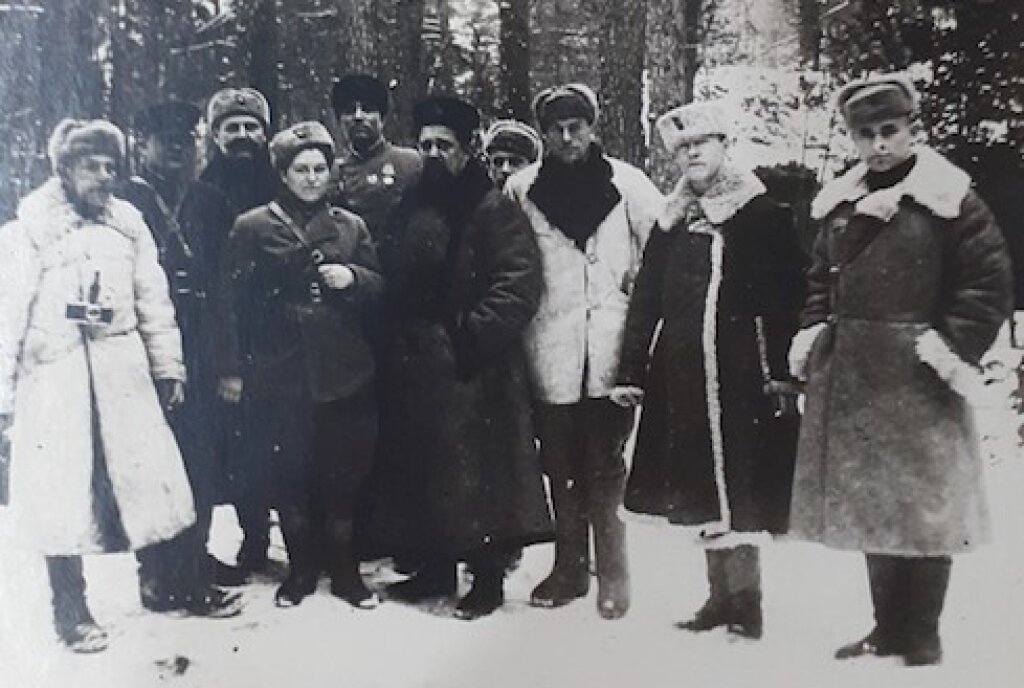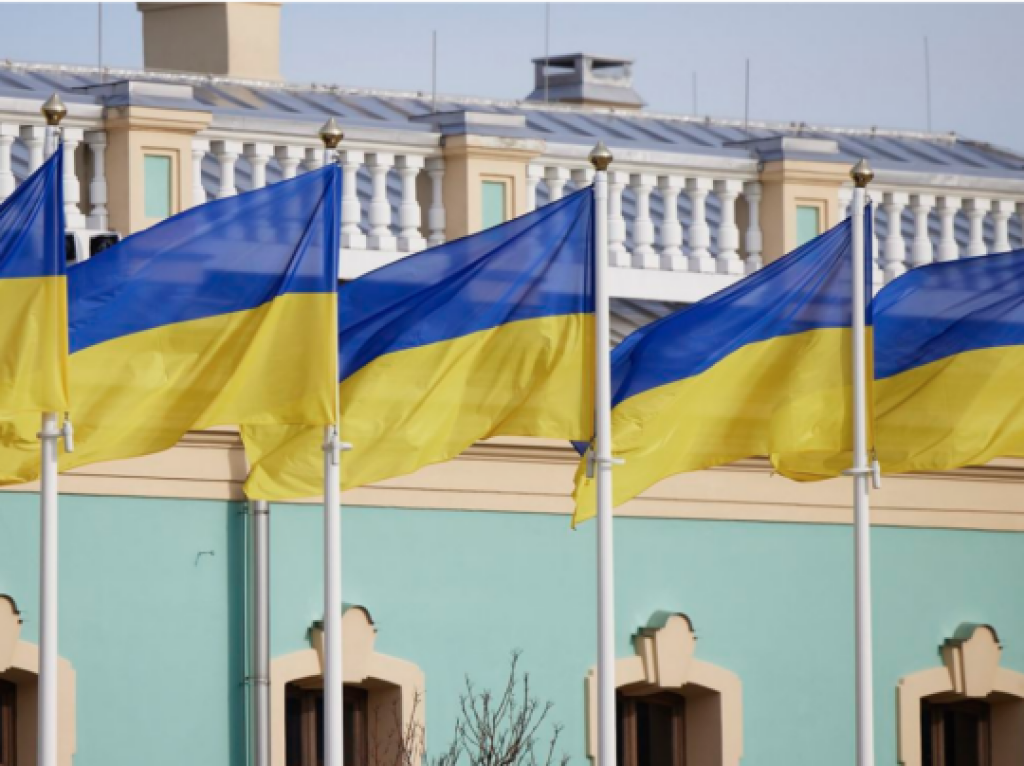Oleksandr Melnyk is an independent scholar who holds a PhD from the University of Toronto. His research interests encompass problems of nationalism, political violence, security, and memory politics in the context of the history of Ukraine and Russia in the twentieth and twenty-first centuries. His monograph, World War II as an Identity Project: Historicism, Legitimacy Contests, and the (Re-)Construction of Political Communities in Ukraine, 1939-1946, appeared with Ibidem Press in 2023.
Тhe discussion of Soviet special operations in Axis-occupied territories during the Second World War must begin with a statement of fact. Through the decisions of the political leadership, Soviet coercive actors were always present behind enemy lines. Their institutional affiliation, geographical distribution, numerical strength, and ability to exercise power and influence, however, varied considerably over time and across different localities. Functionally, the structures of the Soviet resistance movement tended to fall into three main clusters: combat units (guerrilla formations of various provenance and institutional affiliation); underground organizations (Communist Party cells, intelligence-sabotage networks of the Soviet special services—both military intelligence and state security—and grassroots organizations); hybrid and special units (special-purpose units, operational groups of the NKGB, intelligence-sabotage groups, individual agents and agent groups).
In this post, I will focus on one element in this chain: the intelligence operations of the NKGB of the Ukrainian SSR and, relatedly, the institutional efforts, in 1943 and 1944, to (re-)build the Soviet security apparatus in Axis-occupied central and western Ukraine.
To better understand these activities, it is imperative briefly to outline the key features of Soviet intelligence operations in 1941-1943. Soviet security agencies, as current scholarship makes clear, played an active part in organizing the early structures of the Soviet partisan movement and the Communist Party underground. Their most significant asset, however, was the extensive network of secret agents, many of whom had already participated in domestic surveillance campaigns in the 1920s and 1930s. (Meanwhile, in 1937-1939, Soviet security services in Ukraine employed close to 40,000 secret agents and informers). In building intelligence-sabotage networks, the NKVD/NKGB drew heavily on these resources, blurring, in the context of the Axis occupation, the boundaries between internal security and external intelligence operations.
A typical rezidentura (plural: rezidentury) was headed by a junior or mid-ranking security officer and included a smaller or larger number of cadre officers and secret agents (usually 3-6 core members). By late 1941, the NKGB of the Ukrainian SSR alone created 370 rezidentury (some 4,000 agents). Some 1,500 agents operated in the occupied territories independently of active networks. By the end of the war, the total number of rezidentury, special-purpose units, and operational groups created by the All-Union NKVD/NKGB and its republican subsidiaries exceeded 2,000 (about 15,000 agents).
This process, however, was not linear. The Red Army’s early defeats and successful German counterinsurgency and counterintelligence operations delivered a powerful blow to Soviet partisan units and the Communist Party’s underground organizations. By June 1942, for example, the Soviet authorities retained contact with only 110 out of 1,565 partisan units and groups created in 1941 (just over 6%). The rest were destroyed by German security forces and allied formations, disintegrated, or exited the occupied territory.
Corresponding figures for the clandestine networks of the NKVD/NKGB have yet to be established. What we can say for sure is that the Germans captured dozens of Soviet security officers (e.g. during the Kyiv encirclement), leading to the exposure, paralysis, and collapse of intelligence cells through arrests and the unauthorized departure of rezidenty and secret agents. These losses notwithstanding, at least in relative proximity to the frontlines, the Soviet operatives did launch some successful sabotage operations (e.g. in Kyiv and Mykolaiv) and, with constant replenishment from the center, provided the security agencies with a steady stream of intelligence data.
The situation was more dramatic further west, where Soviet rule had lasted less than two years and where the weakly rooted Soviet security organs had to contend not only with German special services but also with greater distances, the inhospitable political terrain, and organizations of Ukrainian nationalists, which staked sovereignty claims to the territory and eagerly targeted Soviet loyalists and secret agents of the Soviet special services. The cumulative result was the veritable collapse of Soviet intelligence operations in central and western Ukraine. The extent of the problem can be illustrated by the fact that, as late as November 1944, months after the re-establishment of formal structures of Soviet rule in the Volhyn region (prewar population 800,000), all Soviet coercive agencies could call upon was a couple hundred agents (several times lower than ratios of pre-war agents per unit of population in Soviet Ukraine).
The appearance, in the second half of 1943 of the first operational groups of the NKGB of the Ukrainian SSR was a response to the changing strategic situation and the intelligence vacuum in central and western Ukraine. Altogether, in 1944 and 1945, the NKGB of the Ukrainian SSR alone created at least 53 operational groups, sabotage-intelligence teams, and special purposes units, deploying them to various parts of western Ukraine and other Eastern European states.
Here I will limit myself to the groups “For the Motherland!”, “Rout,” “Friendship,” “Volhynians,” “Unitarians,” and “Strike,” which pioneered the trend in 1943-1944, progressively extending the area of operations from the western parts of the Kyiv region to southeastern Poland. Their tasks varied based on local circumstances, but centered on the reconstruction of the security apparatus and surveillance of nationalist networks. Specific objectives included determining the fates of missing NKGB officers; re-establishing contacts with old secret agents and recruiting new ones; creating human and material infrastructures to facilitate the movement of individual agents, other operational groups, and special-purpose units; and infiltrating German institutions, collaborationist formations, and the organizations of Ukrainian and Polish nationalists.
For greater security, officers were attached to large partisan formations, which relocated from the Briansk forests to the Ukrainian-Belarusian Polissia and onward to Volhynia, parts of Galicia, Poland, Slovakia, and Hungary as part of a strategic effort at hard power projection and destabilization of the German rear areas undertaken in 1943-1944. In other words, the projection of hard power and political competition with indigenous nationalists went hand-in-hand with attempts to rebuild the Soviet security apparatus. When Soviet power was re-established, operational groups were expected to hand the new secret agents, captured enemy archives, and lists of “anti-Soviet elements” to the NKGB of the Ukrainian SSR and regional state security offices.
The dossiers of the operational groups in the Archives of the Security Service of Ukraine contain a wealth of information about the challenges and quotidian aspects of their work. We can conclude, for example, that the various groups were not quite equal in their respective status. An important group was “For the Motherland,” under the command of Viktor Khrapko, head of the 2nd section of the IV department of the NKGB of the Ukrainian SSR. Khrapko and his subordinates maintained constant communication with the center and with partisan forces in the field. They assigned operational groups to host formations and provided them with logistical support. “For the Motherland” also proved the most effective of the groups, working with over 150 agents, including dozens among the members of the host partisan brigade. It is not clear whether this state of affairs proceeded from the operatives’ experience, or, as is more likely, reflected that Ukrainian-Belarusian Polissia provided a more favorable area of operations than areas further west.
In Volhynia, for example, officers struggled to establish contacts with old agents and recruit new ones because of the prior murderous campaign against Communists, Soviet loyalists, and secret agents by German special services and the Organization of Ukrainian Nationalists (OUN). Indeed, in the areas where Ukrainian Insurgent Army units were active, operatives could not even venture into remote villages without sizable partisan forces. In Galicia and southeastern Poland, on the other hand, the partisans of Petro Vershyhora, in order to avoid the attention of Ukrainian nationalists and German security forces, were always on the move. As a result, the “Friendship” group could not cultivate relationships with the local population and was reduced to serving the needs of the partisan formation.
The materials on the operational groups also contain information about dozens of extra-judicial executions of collaborators and Ukrainian nationalists by partisans and members of multiple operational groups. Finally, the documents point to Soviet security agencies’ efforts to establish control over partisan formations and the fraught relationships between partisans and NKGB representatives. The leader of the “Unitarians,” Vasilii Khondoshko, recalled how the commanding officers of Ivan Shitov’s brigade tried to limit the scope of his activities and recommended that he choose as a host “the kindred formation” of state security colonel Medvedev.
For his part, Petro Vershyhora openly told the leader of the “Friendship” group that he did not like the NKGB, while his subordinates blamed Soviet security agencies for the early failures of the partisan movement. In the final analysis, the Soviet state had its way, recruiting many partisans as secret agents and arresting former collaborators in the partisan ranks. But that is a story for another post.




